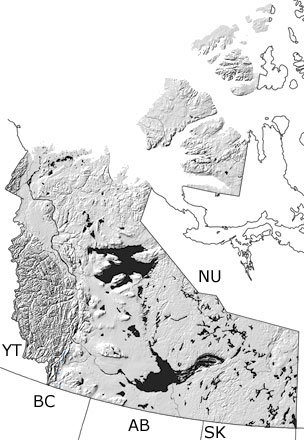Paleontology and geologyIn the Early Carboniferous, mountain-building continued in the northern part of Northwest Territories as another continental plate collided with Laurentia. This collision folded, faulted, and uplifted rocks in the Arctic Archipelago, putting all but the western side of the territory above sea level. The land was covered with forests and swamps of cycads, seed ferns, conifers, and gnetophytes. Pollen and spores from these plants were often carried out to sea along with sediments eroding off the land. The warm, shallow seas that covered the western Northwest Territories were home to corals, foraminifera, brachiopods, sponges, and echinoderms. By the Middle to Late Carboniferous, the collisions in the north ended, and a basin began to open up over some of the Arctic islands. Many of the Carboniferous rocks have been eroded or buried under younger rocks, but a few small exposures can be found. Some Carboniferous rocks may be included in the undifferentiated Paleozoic rocks on this map, and other more detailed maps may show them. |




